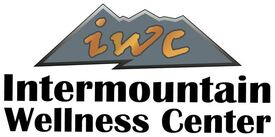FSM or Frequency Specific Microcurrent is used by chiropractic, naturopathic, osteopathic and medical professionals, physical therapists, acupuncturists, occupational therapists and massage therapists to help patients recover from painful conditions, sports injuries, concussions and many other health concerns.
Frequencies are pulses per second measured in hertz. They can be sound waves or electronic pulses. The frequencies used in FSM are electromagnetic pulses used on two channels firing at the same time. The frequencies are delivered using a ramped square wave that includes high frequency harmonics to create the square wave. This makes the frequencies more accurately pulses rather than the pure frequencies achieved with a sine wave generator. Most microcurrent devices use square wave pulses because they have been observed to be more effective clinically.
How does frequency-specific microcurrent work? FSM is applied to the body with a device that delivers a mild current. Microcurrent is an extremely mild electrical current (one millionth of an ampere). The human body actually produces its own current within each cell.
In FSM, depending on the tissue involved, specific frequencies are selected to encourage natural healing of the body and to reduce pain. Frequencies have been identified for nearly every type of tissue in the body.
One of the ways FSM works is by potentially increasing the production of the substance ATP in injured tissues. ATP is the major source of energy for all cellular reactions in the body. Because treatment with FSM can increase ATP production by as much as 500% in damaged tissues, this may help with the recovery process. Depending on the condition, treatment with FSM can “loosen” or soften the muscles, which can help relieve pain and/or stiffness.
What conditions can be treated with frequency-specific microcurrent? FSM is most often used to treat pain, especially nerve and muscle pain, inflammation, and scar tissue, from the following conditions:
Frequencies are pulses per second measured in hertz. They can be sound waves or electronic pulses. The frequencies used in FSM are electromagnetic pulses used on two channels firing at the same time. The frequencies are delivered using a ramped square wave that includes high frequency harmonics to create the square wave. This makes the frequencies more accurately pulses rather than the pure frequencies achieved with a sine wave generator. Most microcurrent devices use square wave pulses because they have been observed to be more effective clinically.
How does frequency-specific microcurrent work? FSM is applied to the body with a device that delivers a mild current. Microcurrent is an extremely mild electrical current (one millionth of an ampere). The human body actually produces its own current within each cell.
In FSM, depending on the tissue involved, specific frequencies are selected to encourage natural healing of the body and to reduce pain. Frequencies have been identified for nearly every type of tissue in the body.
One of the ways FSM works is by potentially increasing the production of the substance ATP in injured tissues. ATP is the major source of energy for all cellular reactions in the body. Because treatment with FSM can increase ATP production by as much as 500% in damaged tissues, this may help with the recovery process. Depending on the condition, treatment with FSM can “loosen” or soften the muscles, which can help relieve pain and/or stiffness.
What conditions can be treated with frequency-specific microcurrent? FSM is most often used to treat pain, especially nerve and muscle pain, inflammation, and scar tissue, from the following conditions:
- Burns
- Shingles
- Kidney stones
- Asthma
- Irritable bowel syndrome
- Disc injuries
- Fibromyalgia
- Diabetic neuropathy
- Neuromas (overgrowth and scarring to a nerve after an injury)
- Tendinopathy (inflammation and/or swelling of the tendon)
- Acute (sudden) and chronic (long-term) musculoskeletal injuries
- Acute and chronic neuropathic (nerve) pain
- Chronic fracture and bone pain
- Arthritis
- Torticollis (the head is tilted to one side)
- Disc injuries/discogenic- and facet-based pain
- Viscerally-referred pain
- Concussions
- Headaches
- Plantar fasciitis (pain in the heel and foot)
- Sports injuries
- Wounds
Photo used under Creative Commons from davidstewartgets

